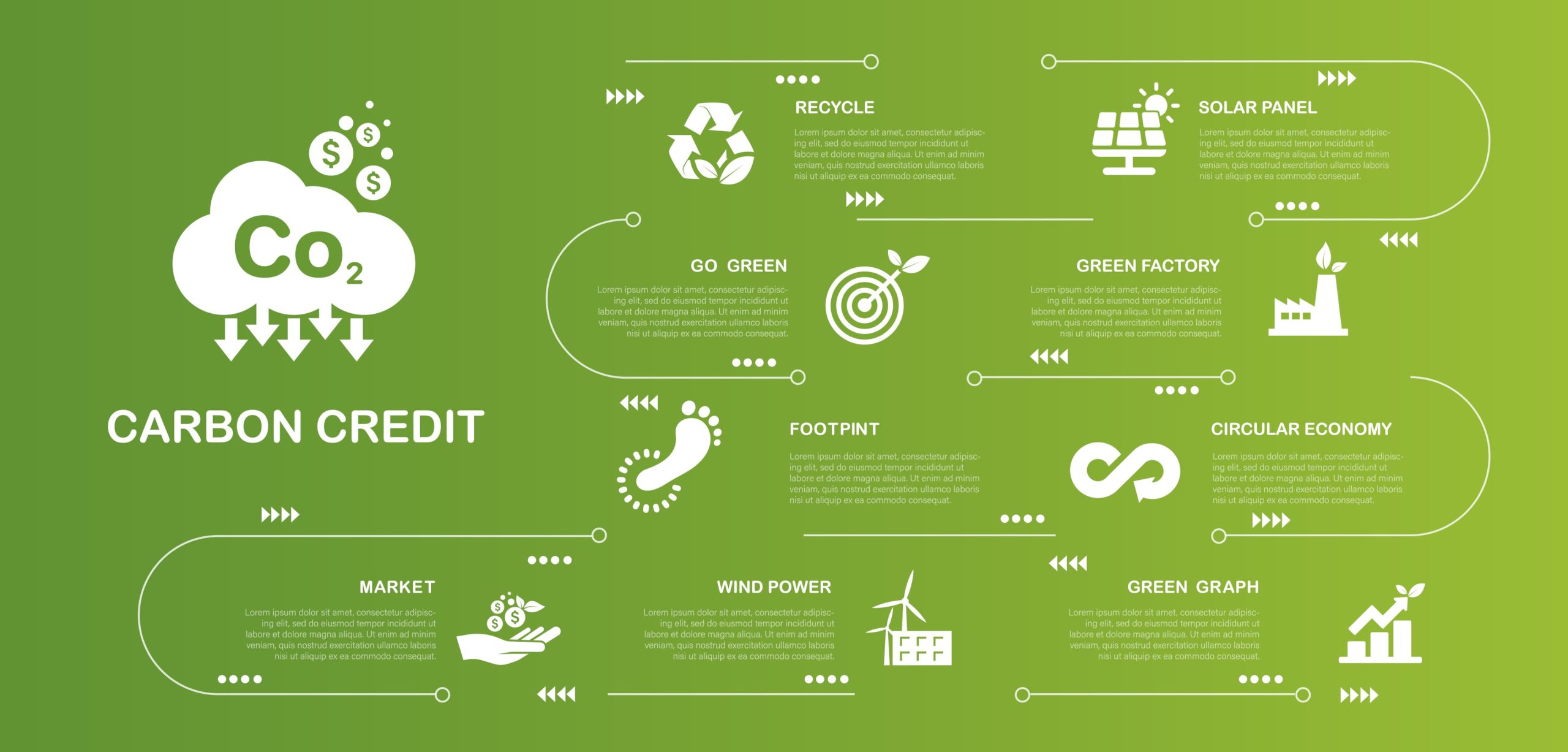
Understanding Carbon Neutrality
Defining carbon neutrality and its significance
Carbon neutrality refers to the state of balancing carbon emissions with carbon removal or offsetting so that the net emissions amount to zero. This concept is pivotal in the fight against climate change, as it directly addresses the need to curb greenhouse gas concentrations in the atmosphere and reduce carbon footprint globally.
Achieving carbon neutrality involves significant efforts to reduce emissions from various sources, such as transportation, industry, and energy production, and offsetting any remaining emissions through activities like reforestation or investing in renewable energy projects. In fact, some nations aim to become a carbon negative country, going beyond neutrality by removing more carbon from the atmosphere than they emit.
The significance of carbon neutrality cannot be overstated. As global warming continues to accelerate, driven by human activities that release large amounts of carbon dioxide (CO2) and other greenhouse gases, the need for robust climate action becomes increasingly urgent.
By striving for carbon neutrality, countries and organizations demonstrate their commitment to sustainable development and climate resilience. This goal also aligns with international climate agreements, such as the Paris Agreement, which seeks to limit global temperature rise to well below 2°C above pre-industrial levels. Achieving carbon neutrality is not just a technical challenge but a moral imperative to protect the planet for future generations.
The Impact of Greenhouse Gas Emissions

The role of greenhouse gas emissions in climate change
Greenhouse gases (GHGs), including carbon dioxide (CO2), methane (CH4), and nitrous oxide (N2O), play a critical role in driving climate change. These gases trap heat in the Earth’s atmosphere, leading to the greenhouse effect, which results in global warming.
The accumulation of GHGs in the atmosphere enhances the natural greenhouse effect, causing more heat to be trapped and leading to higher global temperatures.
The consequences of increased greenhouse gas emissions are profound and far-reaching. They contribute to a rise in average global temperatures, resulting in melting polar ice caps, rising sea levels, and more frequent and severe weather events, such as hurricanes, droughts, and heatwaves. These changes have significant impacts on ecosystems, biodiversity, and human societies, including threats to food security, water resources, and public health. Reducing greenhouse gas emissions is essential to mitigate the adverse effects of climate c
Achieving Net Zero Emissions
The global goal of achieving net zero emissions
The global goal of achieving net zero emissions is encapsulated in the Paris Agreement, which aims to limit global warming to 2°C by 2100 and ideally to 1.5°C. Reaching net zero emissions involves balancing the greenhouse gases released with the amount removed from the atmosphere, ensuring there is no net increase in atmospheric GHG levels.
This goal requires a comprehensive approach that includes reducing emissions across all sectors, enhancing carbon sinks such as forests and oceans, and developing technologies for carbon capture and storage.
To achieve net zero emissions, countries must implement ambitious policies and strategies that promote energy efficiency, renewable energy adoption, and sustainable land use practices. This involves the energy transition, transitioning away from fossil fuels, investing in clean technologies, and promoting behavioral changes among individuals and businesses. Collaboration at the international level is also crucial, as climate change is a global issue that requires coordinated efforts and shared responsibilities. The path to reach net zero emissions is challenging but necessary to avoid the worst impacts of climate change and ensure a livable planet for future generations.
Country-level target-setting processes for net zero emissions
Several countries have set ambitious net zero targets, recognizing the urgency of addressing climate change. For instance, the UK has committed to achieving net zero emissions by 2050, while France and Sweden have set similar targets. These targets involve significant emission reductions and the implementation of carbon offsetting measures. To achieve these goals, countries must develop detailed plans that outline specific actions and milestones, engage stakeholders, and ensure accountability.
Country-level target-setting processes involve comprehensive assessments of current emission levels, identification of key emission sources, and the development of strategies to reduce emissions across various sectors. This includes promoting renewable energy, enhancing energy efficiency, and supporting sustainable agriculture and forestry practices.
Countries must also invest in research and development of new technologies, such as carbon capture and storage, to achieve long-term emission reductions. By using global emissions and setting and pursuing ambitious net zero targets, countries can lead the global effort to combat climate change and inspire others to take similar actions.
Carbon Negative Countries: Examples and Strategies
Bhutan: A pioneer in carbon negativity
Bhutan stands out as a pioneer in carbon negativity, absorbing more carbon dioxide than it emits. This achievement is a result of the country’s commitment to environmental protection and sustainable development. Bhutan’s government has implemented policies that prioritize conservation and sustainable land management, including maintaining over 70% of the country under forest cover. Additionally, Bhutan generates its electricity from renewable hydropower, reducing reliance on fossil fuels and minimizing the country’s carbon emissions further.
Bhutan’s approach to carbon negativity also involves integrating environmental conservation into its national development strategy, known as Gross National Happiness (GNH). This holistic approach emphasizes the well-being of its citizens and the protection of natural resources. Bhutan’s success demonstrates that it is possible for countries to achieve carbon negativity through dedicated policies and sustainable practices. By setting an example, Bhutan inspires other nations to pursue ambitious climate neutrality goals and adopt strategies that prioritize both environmental sustainability and human well-being.
Implementing policies and practices to reduce carbon emissions
Carbon negative countries implement a range of policies and practices to reduce emissions and achieve carbon negativity. These include increasing the use of renewable energy sources, such as wind, solar, and hydropower, to replace fossil fuels.
Implementing energy efficiency measures in buildings, industries, and transportation systems also plays a critical role in reducing methane emissions. Additionally, promoting sustainable agriculture and forestry practices helps enhance carbon sequestration and maintain healthy ecosystems.
Carbon offsetting and carbon credits are essential tools for achieving carbon negativity. Countries can invest in carbon offset projects that reduce or remove greenhouse gases, such as reforestation, soil carbon sequestration, and renewable energy initiatives.
By purchasing carbon credits, countries can offset their emissions more greenhouse gases and contribute to global emission reduction efforts. Effective monitoring and verification systems are necessary to ensure the integrity and transparency of carbon offset projects. By implementing these policies and practices, countries can make significant progress towards achieving carbon negativity and setting a positive example for the rest of the world.
Renewable Energy and Carbon Reduction

The role of renewable energy in reducing carbon emissions
Renewable energy plays a crucial role in reducing carbon emissions and transitioning towards a carbon-negative future. Renewable energy sources, such as wind power, solar, hydro, and geothermal, produce electricity without emitting greenhouse gases. By increasing the share of renewables in the energy mix, countries can significantly reduce their reliance on fossil fuels and lower their carbon footprint. Investing in renewable energy infrastructure, such as wind farms, solar panels, and hydropower plants, is essential for achieving long-term emission reductions.
Moreover, renewable energy projects often have additional benefits, including job creation, improved energy security, and reduced air pollution. These projects can also stimulate economic growth by attracting investments and fostering innovation in clean technology.
Governments can support the transition to renewable energy by implementing policies that incentivize renewable energy development, such as feed-in tariffs, tax credits, and grants. Additionally, promoting research and development in renewable technologies can drive further advancements and cost reductions, making renewables more accessible and affordable for all.
Carbon Accounting and Offset
The importance of comprehensive carbon accounting
Comprehensive carbon accounting is crucial for accurately tracking emissions and removals, enabling countries and organizations to achieve net zero emissions. Carbon accounting involves measuring, reporting, and verifying greenhouse gas emissions from various sources, including energy use, transportation, industrial processes, and land use.
Accurate carbon accounting helps identify key emission sources, set reduction targets, and monitor progress over time. It also provides transparency and accountability, ensuring that emission reduction efforts are credible and effective.
Comprehensive carbon accounting requires the use of standardized methodologies and protocols, such as the Greenhouse Gas Protocol, to ensure consistency and comparability. Organizations can benefit from third-party verification and certification to enhance the credibility of their carbon accounting practices. By implementing robust carbon accounting systems, countries and organizations can make informed decisions, develop effective emission reduction strategies, and demonstrate their commitment to sustainability and climate action.
The role of carbon credits in achieving carbon negativity

Carbon credits are an essential tool for achieving carbon negativity and net zero emissions. Carbon credits signify the reduction or elimination of one metric tonne of carbon dioxide equivalent (CO2e) from the atmosphere.
Countries and organizations can purchase carbon credits to offset their emissions by investing in carbon reduction projects, such as reforestation, renewable energy, and energy efficiency initiatives. These projects help reduce or remove greenhouse gases, contributing to global emission reduction efforts.
The carbon credit market enables the trading of carbon credits, providing a financial incentive for emission reduction projects. By participating in the carbon credit market, countries and organizations can support sustainable development and promote the transition to a low-carbon economy.
Ensuring the integrity and transparency of carbon credits is essential to maintain their credibility and effectiveness. This involves rigorous monitoring, reporting, and verification processes to ensure that carbon credits represent real, additional, and permanent emission reductions.
Overcoming Challenges
Addressing criticisms of carbon offset
Carbon offsetting has faced criticism for issues such as lack of transparency, credibility, and additionality. To address these criticisms, it is essential to implement robust standards and protocols for carbon offset projects. This includes ensuring that projects are independently verified, deliver real and measurable emission reductions, and provide additional benefits beyond what would have occurred without the project. Transparent reporting and third-party certification can enhance the credibility of carbon offset projects and build trust among stakeholders.
Overcoming challenges in achieving carbon negativity
Achieving carbon negativity requires significant emission reductions and carbon offsetting efforts. However, there are several challenges to overcome, such as lack of infrastructure, resources, and political will. Addressing these challenges involves investing in renewable energy, enhancing energy efficiency, and promoting sustainable land use practices.
Additionally, fostering collaboration among governments, businesses, and communities is crucial to mobilize resources and drive collective action limiting global warming. By overcoming these challenges, countries can make meaningful progress towards achieving carbon negativity and creating a sustainable future.
International Cooperation and Standards
The role of international agreements in achieving carbon negativity
International agreements, such as the Paris Agreement, play a vital role in promoting global cooperation to achieve net zero emissions and carbon negativity. These agreements set targets and guidelines for emission reductions, encouraging countries to adopt ambitious climate policies and strategies.
By participating in international agreements, countries can share knowledge, resources, and best practices, enhancing their ability to address climate change. Collaborative efforts at the international level by many countries are essential to drive global progress towards a sustainable and resilient future.
Standards for products and credibility in carbon negativity
Standards for products, such as carbon neutral certification, ensure the credibility and transparency of carbon neutrality claims. These standards provide guidelines for measuring, reducing, and offsetting emissions, helping businesses demonstrate their commitment to sustainability.
Independent verification and certification enhance the credibility of carbon neutrality claims, building trust among consumers, investors, and stakeholders. By adhering to established standards, businesses can ensure the integrity of their sustainability efforts and contribute to global emission reduction goals.
National and Individual Action
Individual actions to reduce emissions and contribute to carbon negativity
Individuals play a crucial role in achieving carbon negativity by making sustainable lifestyle choices. Actions such as using public transport, reducing energy consumption, adopting a plant-based diet, and minimizing waste can significantly reduce an individual’s carbon footprint.
Additionally, supporting companies and products that prioritize sustainability and engaging in local climate action initiatives can amplify individual efforts. By taking personal responsibility for reducing emissions, individuals contribute to national and global efforts to combat climate change and promote sustainability.
The Future of Carbon Negativity
The future of carbon negativity and its potential impact
Achieving carbon negativity has the potential to mitigate climate change and global warming, creating a sustainable and resilient future. The future of carbon negativity depends on continued international cooperation, innovation in clean technologies, and collective action at all levels. By embracing ambitious climate goals and implementing effective policies and practices, countries can lead the way towards a carbon-negative future.
The impact of achieving carbon negativity extends beyond environmental benefits, promoting economic growth, social well-being, and global stability. As we move towards a sustainable future, the commitment to achieve carbon neutrality and negativity will play a pivotal role in ensuring a healthy and thriving planet for generations to come.
